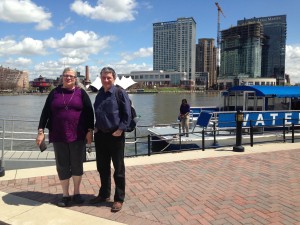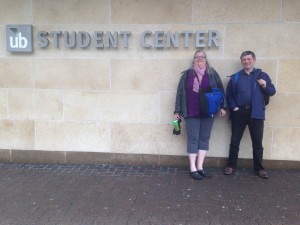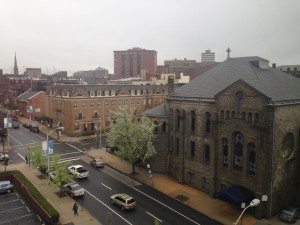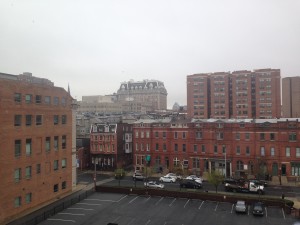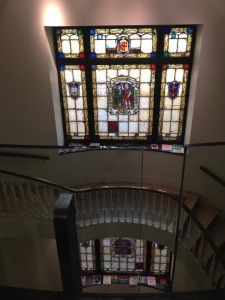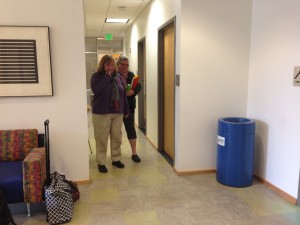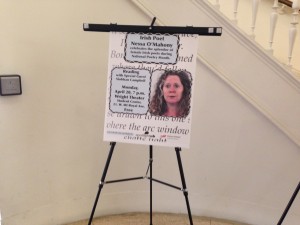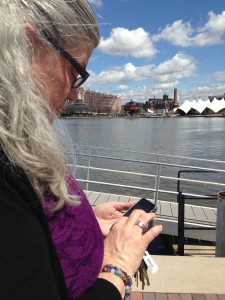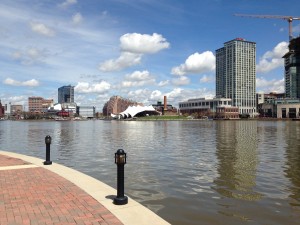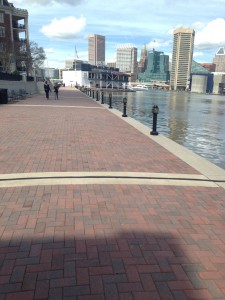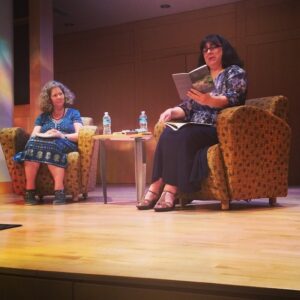For Mother's Day
Mammy at Masada
If I were to remember you anywhere
it would be here, cliff-top,
59 metres above Dead Sea-level,
seated on rock, light bouncing off
the white glare of your sun-hat,
breath spasming in your 85th year
of brooking no obstacles.
We’d heard the foundation myth
on the way up: the no surrender,
the 960 men, women and children
opting for glorious death. You opt
for glorious life, gasp the thin air
left in your body, grasp the chance
to rise, resume the tour, run upstream
of tourists swarming the citadel.
What we remember, what we choose to forget
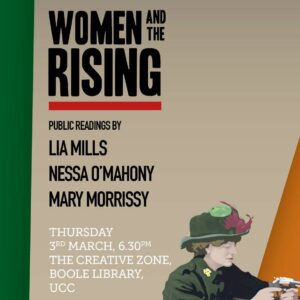 On Easter Monday 24th April, 1916, a group of some 1,000 Irishmen and women came into Dublin and occupied a series of buildings around the city. Their aim was to overthrow the British Government in Ireland by military force and to proclaim an Irish Republic. Over the next seven days, over 450 people died, 2,000 were wounded and the centre of Dublin largely destroyed by shelling. 15 of the leaders of the uprising were executed; a 16th was executed later that summer.
On Easter Monday 24th April, 1916, a group of some 1,000 Irishmen and women came into Dublin and occupied a series of buildings around the city. Their aim was to overthrow the British Government in Ireland by military force and to proclaim an Irish Republic. Over the next seven days, over 450 people died, 2,000 were wounded and the centre of Dublin largely destroyed by shelling. 15 of the leaders of the uprising were executed; a 16th was executed later that summer.
On the same day in April 1916, the second Battalion of the Royal Munster Fusiliers was stationed in France, awaiting orders for the next big push that was to become the Battle of the Somme later that summer.
There’s no real information about how soon the news of events in Dublin filtered through to Irish troops serving in France, or what impact it might have had on their mood. There are few reports of mutinies in the weeks that followed the Easter Rising; indeed the first that Irish soldiers may have been aware of the changed sentiment at home that followed the mass executions and internment was during their next leave home. Writers such as Sebastian Barry (in novels such as A Long Long Way) have vividly evoked that change in sentiment, as men who’d left Ireland as heroes returned to a hostile and embittered response.
Included in their numbers was my grandfather, Michael McCann, who had enlisted in the British Army in November 1915 and who had transferred to France some time in April 2016. It’s probable that he had been put to work as part of the Pioneer Battalion of the Munsters, providing the hard labour that created roads, tracks, emplacements and dugouts in the Loos-Marzingarbe-Les Brébas area (source Fourteeneighten Research). But by July he had been involved in the action that became the Battle of the Somme, one of the Great War’s bloodiest conflicts.
Afterwards, hundreds if not thousands of returning Irish soldiers left the British Army and joined the ranks of the Irish Republican Army where they became active in a campaign against a Crown that they’d been defending only months before. My grandfather was one such; he discharged from the British Army in March 1918 (he’d been treated for shrapnel injuries in 1917) but joined the IRA in England in October 1917, possibly having first joined an organisation such as the Irish Self Determination League or the Irish Labour Party. By 1919 he was on active duty with the IRA, taking part in arson attacks and munitions raids; by 1921 he was arrested during an attempted raid on an explosives magazine in Middlesbrough, and sentenced to five years penal servitude in Parkhurst. The subsequent Treaty and amnesty led to his release and return to Ireland in early 1922, just in time for the Civil War where he fought as a Free State Army commandant.
The Civil War had its own share of atrocities, but here too we’ll never know how battle-hardened veterans like my grandfather reacted to them. He kept it bottled up; even his own children knew little of his exploits, other than those reported on by a frequently partisan press. My aunts and uncles described him as a ‘quiet man’ who kept his thoughts to himself. Fragments of his story came down from my grandmother; over the last few years I’ve tried to research to fill the gaps. My collections Trapping a Ghost and Her Father’s Daughter (Salmon Poetry 2014) include some of the poems that resulted.
It’s clear that my grandfather was typical of a whole generation of Irishmen who experienced utter horror and were unable to find an outlet for those experiences. Irish society had embraced another mythology; the narrative of Irish nationalism left no space for other Irishmen who also believed they were fighting for their country.
One of the best elements of this current decade of commemoration has been the re-emergence of their stories. Works like Lia Mills’s marvellous novel, Fallen (which will be the Belfast-Dublin Two Cities One Book choice from April) are exploring the reality of lives for the thousands of individuals and families whose lives were transformed for ever, both by violence at home, and violence on those distant green fields.
I’m incredibly lucky to be reading alongside Lia, and the marvellous Mary Morrissy, whose own novel The Rising of Bella Casey captured that tumultuous period of Irish history so well, as part of The Women and the Rising series at University College Cork on Thursday 3rd March. Further details on http://creativewritingucc.com/www/women-writers-remember-the-rising/.
I’ll also be leading a free creative writing workshop for the Open University on exploring family history at Castletown House in Celbridge, Co. Kildare, in late April. Details on how to book a place are on http://www.open.ac.uk/republic-of-ireland/events
Ink Pantry review of Her Father's Daughter
Natalie Denny of Ink Pantry has reviewed Her Father's Daughter for the Poetry Drawer section of the website.
‘My page has been empty for months. Forgive me for filling it.’
Nessa O’Mahony’s ‘My Father’s Daughter’ explores the nature of the imperishable and pronounced bonds between fathers and daughters. We embark upon a poetical journey, combining the autobiographical with the historical through two father-daughter relationships spanning two different periods of Irish history.
Nessa’s poetry is a raw and at times a painfully honest depiction of her family life, especially those memories surrounding her father and grandfather. The finished article is a commentary on love and loss including the reconstructive and subjective power of memory.
From ‘His Master’s Voice’ that looks at life through the eyes of the family pet to the powerful ‘Portrait of the Artist’s Father’ which is a personal invite to observing a dying man, Nessa holds little back in creating her images and exhuming her past.
The poem I identified most with was ‘Those Of Us Left’ which comments on the turbulent aftermath proceeding the death of a loved one. It resonates as it accurately portrays the confusion and stark anger which is very typical of grief but not as often spoken about. The gritty realism in the words leave you uncomfortable but enlightened.
The collection is split into five sections, each focusing on a different area. There is a whole part which utilises nature, weaving rich imagery and juxtaposition to refresh how we perceive sentient beings. There’s a particular reference used to different birds of prey which compares relationships with nature, providing interesting contrasts.
Nessa explores the idea of her own immortality in ‘Walking Stick’ when she details adopting the walking aid that was previously her father’s.The cyclical process of life is a running theme, particularly the role reversal of child to an adult in a parent’s latter stages of life. This is a experience many people have with their elderly parents which Nessa captures beautifully.
‘Her Father’s Daughter’ explores illness in ‘Waiting Room’ and the failing of mind and body while exploring the impact on relationships. It is a body of work that can transcend the ages and has something within that would resonate with many.
Overall the collection is a heartfelt, vivid and moving tribute.
http://nessaomahony.com/?cat=4
https://twitter.com/Nessao
http://www.amazon.co.uk/Her-Fathers-Daughter-Nessa-OMahony/dp/1908836857/ref=sr_1_1?ie=UTF8&qid=1453651415&sr=8-1&keywords=her+fathers+daughter+nessa
John O'Donnell reviews Her Father's Daughter
Extract from ‘Postcards from the Edge’ by John O’Donnell, Poetry Ireland Review, Issue 117, December 2015
The heart of Nessa O’Mahony’s collection, Her Father’s Daughter, is a poignant and affecting series of reflections on the death of her own father. The book opens with ‘Giving Me Away’, an uneasy father and daughter road-trip which O’Mahony views initially as a sort of atonement by her father – ‘Because you had never walked me down the aisle / you sit 330 miles in the passenger seat, / watching the speed-dial, / miming brakes’ – as they head towards her ‘new start’ in Britain. However the tell-tale signs O’Mahony observes along the way reveal her father’s decline: ‘I know you’ve already /left me on this trip, / at Holyhead, at Dublin Port / before the ship embarked.’ Later we are shown the agony – for relatives – of the slow death of a loved one: ‘It has been a year / since you left / the hospital whites, / and were swalled up / by your own chair’ (‘The Long Goodbye’). Elsewhere O’Mahony looks further back; in ‘Walking Stick’ the story of her grandfather’s life is told by reference to his stick: ‘An honest thing: / ash shaft, plain, / crook smooth’ which has been ‘Crafted to bear weight, / the tonnage of trench-foot’, before being ‘Decommissioned once again / into night-watchman jobs / in Coventry, in Cricklewood.’ A case is visible on the striking cover of the same grandfather ‘kitted out as the pride / of the Munster Fusiliers’ (‘Casting Lots’), in which poem O’Mahony also hints intriguingly at the choice facing her grandfather and his brother: ‘who’d go, / who’d return / to farm and family.’ At times O’Mahony feels guilty writing about the illnesses and deaths of loved ones. In ‘Her Master’s Voice’, dedicated to the late James Simmons, she considers Simmons’s elderly dog Charlie on the day his master’s coffin is carried out: ‘He can’t know that a stranger / will come soon, tidying, / sweeping up, thieving a poem / like a starving cur grabs a bone / where she finds it.’
‘Portrait of the Artist’s Father’ is really a portrait of the arist writing about her father’s illness: ‘I trawl for metaphors, / imagine corollaries / for the fluid filling your lungs’, before acknowledging the perceived impropriety of so doing:
My page
has been empty
for months.
Forgive me
for filling it.
O’Mahony should not reproach herself: Graham Greene’s famous insight that there is ‘a splinter of ice in the heart of a writer’ came to him in hospital, as he listened to and watched from a nearby bed the tears and cries of a mother whose son had just died, thinking: ‘This is something which one day I might need.’ A writer does need a good editor, howerver, and there are a couple of curious glitches in an otherwise attractive presentation. A more ruthless editor might also have advised against the inclusion of one or two less successful pieces. At its best, though, O’Mahony’s forthright, heartfelt style is affecting, and further exploration of her family hinterland will no doubt yield up other secrets.
Horses for courses - 2016 Here I Come
I've discovered that I'm at my happiest in a classroom. There's nothing nicer than sharing a big room with a large table and lots and lots of like-minded people. As a writer, it's been one of the great joys of life to be able to work with other writers to develop their voices; it reminds me of all those wonderful teachers who made such a difference to me over the years. Katie Donovan will forever have my gratitude for being the first professional writer to tell me that I had something worth developing - my own voice. I took a course with her at the Irish Writers Centre in 1994 or early '95, and her encouragement gave me the courage to persevere and to take risks.
So that's why I'm so excited to have the chance this year to extend my range of teaching to new areas. I'll be co-teaching a course on poetry with the wonderful Peter Sirr at Borris House this April; the course is being organised by the superb Margaret O'Brien and Nollaig Brennan of The Story House, and you can get more details on http://www.thestoryhouseireland.org/#!our-next-course/c573
I'm also visiting Listowel Writers' Week for the first time this year, and will be facilitating a 3-day beginners creative writing workshop. I've heard wonderful things about Writers Week, so am thrilled to have the opportunity to experience it first hand. There are more details of this on http://writersweek.ie/creative-writing-workshops-2016/
And of course I'm teaching once again at the Irish Writers Centre, where my popular Finding Your Form course will be running again this Spring. More details on http://irishwriterscentre.ie/collections/beginner/products/finding-your-form-with-nessa-omahony-spring-2016.
So plenty of reasons to be cheerful this year - and that's just the ones I already know about.
Beat up little seagull - old tunes and new in Baltimore and DC
I've been lucky enough to work with some amazing writers and teachers over the past number of years. One of my happiest collaborations has been with the amazing faculty of the Armagh Project, a US-based outfit that brings undergraduate students over to Armagh for the month of July to experience the life, culture and politics of that extraordinary part of our island. Some of the faculty members of the Armagh Project are based at the University of Baltimore, in Maryland, and many of their students participate in the programme each year, so I was especially thrilled when UB-based playwright Kimberley Lynne invited me over to perform my work at the UB Spotlight's Charles Wright theatre during the month of April. Culture Ireland kindly agreed to support the trip, which also included a reading in Washington DC.
Kimberley also suggested that, while in Baltimore, I might like to meet some of the class groups to talk about Irish culture and poetry, so the reading tour took on a whole additional dimension as I cast about for subjects that would suit the different class groups, who study 20th century culture and ideas, creative writing and Irish studies. I felt rather privileged to get a chance to talk about my country, its writers and history, to groups of American students, and also rather daunted. I wanted to get the balance right - to be informative and accessible without being simplistic. In fact, many of these students turned out to be far more informed about Ireland and its history than I was, down to the expertise and dedication of teachers like Kimberley and Joan Weber, a writer and theatre in education specialist, who have immersed themselves in Irish culture over the years.
The reading at the Wright Theatre was great fun; the audience was attentive and informed and there was an excellent question and answer session at the end during which I was asked about my predilection for water-based imagery. It's marvellous when readers notice something one hadn't previously.
One of the best parts of visiting Baltimore was to get the chance to see it through the eyes of people who've lived their all their lives, or much of them. It is a beautiful city: a huge stretch of water (Chesapeake Bay) at its heart and extraordinary Victorian architecture at its centre. And I had wonderful tour guides. Both Kimberley and Joan are proud Baltimorians, and they taught me a great deal about its history, both distant and recent. The riots over the death in custody of Freddie Gray hadn't happened yet (in fact, they broke out just a day or two after we left the city) but he had already died and both Kimberley and Joan had been speaking about the tensions simmering in a city where the ethnic divide stretches back to the 'White Flight' of the post MLK assassination- troubles of 1968 and beyond to the legacies of the Civil War itself. Indeed Joan and I had been discussing the difficulties caused by the failure to face up to Civil War legacies, both in her country and on our small island. So it was very distressing to see reports of the trouble flaring up in the days after our departure. Baltimore is just the latest in a long line of similar events, with the same issues at their core. I just hope that some longer term solutions can be found, if Americans are prepared to do the sort of 'soul searching' that President Obama was recommending in the aftermath of Gray's death.
Throughout my visit, I referenced Randy Newman's song 'Baltimore', which I'd heard constantly growing up in a Churchtown house with a brother who was one of his greatest fans. Oddly enough, Newman's name rarely got more than a quizzical grunt when I mentioned him. Perhaps Baltimorians took his line 'It's hard to live' at face value; in a place where the cannon on the hill is aimed directly into the centre of the town (another Civil War legacy) they do tend to have a long memory.
From Wales to here

I spent three of the happiest years of my life living in Wales. I was studying for a PhD at Bangor University and living in a mid-terrace Georgian building, with a bay-window fronting out onto the Menai Straits and the Snowdonia Mountains. I was immersed in books reading and walking and researching and couldn't have conceived of a better life. Money was tight, of course, but that was good training for the freelance writing life that was to follow ;-)
One of the greatest joys was finding out about Welsh culture and literature. Up to that point, the only taste of it I'd had was a brief exposure to the writings of Dylan Thomas and the extraordinary privilege of hearing R.S. Thomas at the Irish Writers Centre, sometime in the 1990s. So I had no idea of how culturally rich a country Wales is, what extraordinary pride the Welsh take in their writers and painters and scholars, and how little lip service is paid to the notion of the arts and culture. Their devotion is genuine and manifest. Their separate language is visible everywhere, and heard constantly, in the north of the country at the very least. If you want to work in the public services there, you need to learn the language, you don't get away with a nod or a wink. And the landscape is dotted with stone circles commemorating the holding of one of their large cultural festivals, or eisteddfod.
What I also discovered was how close Ireland and Wales are. Although it is indeed 66 nautical miles between Dublin and Holyhead (or so the old Stena banners used to claim), at its closest point (between the Llyn Peninsula and Wicklow Head) it's only 27 nautical miles, and there are historical records of the regular raids that Irish pirates made on the Welsh coast throughout the centuries. Many place names in Wales contain words for Ireland or the Irish in them, and even St. Patrick is commemorated in more than one early Christian church there, including the glorious Llanbadraig on the coast of Anglesey.
So I was delighted when the Irish Writers Centre agreed to hold an event exploring the many cultural links between our two countries. There's a fantastic panel lined up - sublime poet Nerys Williams (who lectures at UCD), exquisite prose stylist Simon Holloway (who lives outside Bangor and teaches at Bolton), Lleucu Siencyn, head of the agency that promotes and develops literature in Wales, and Jonathan Williams, a Welshman who has become one of Ireland's most influential literary agents. There'll even be a Welsh male voice choir. What more could you possibly ask.
So join us on Thursday 26th February, the Irish Writers Centre. More details on how to book are here: http://irishwriterscentre.ie/products/66-nautical-miles
Early birds catch the creative writing worm at Brewery Lane this Easter
I'm very excited to be taking part in a three-day writing workshop alongside the fabulous Ferdia MacAnna for the Brewery Lane Writers Weekend this Easter. It takes place from Friday 10th to Sunday 12th April (that's the weekend after Easter) at the Brewery Lane Theatre, Carrick on Suir, Co. Tipperary.
Organiser Margaret O'Brien, one of the powerhouses behind the new Arvon-inspired The Story House writing workshops, tells me that there is an early bird offer of €160 if paid by Thurs. 12th Feb. (It will be €175 after that date)
Ferdia and I will be offering a mix of facilitated workshops and one-to-one sessions and there'll be opportunities for performance as well.
You can get more information, or book your space, by contacting Margaret directly via http://margaretaobrien.com/contact-2/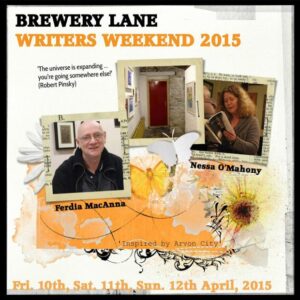
Fancy a free download?
To celebrate the publication of my first audio book, I've got a free code to offer to download the book from the Audible website. All you have to do to win the code is to respond to this post, or to the Facebook posting of this link. I'll enter each name into a hat and email or Facebook the lucky individual - then all you need to do is write a little review telling the world what you think of Bar Talk. Sweet, eh?
You can visit the Audible Page for Bar Talk at
http://www.amazon.co.uk/Bar-Talk-Unabridged/dp/B00R794GI4
